Archives 75 – Tony Wherry, Second County Archivist: 80th Birthday Blog Revisit
- 13th April 2022
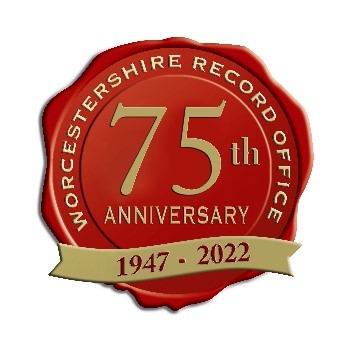 We are thrilled to wish Tony Wherry, 2nd County Archivist a very ‘Happy Birthday!’ today, Monday 29th June. Our current County Archivist Dr Adrian Gregson thought it’d be a perfect opportunity to revisit this 75th Anniversary blog to celebrate…
We are thrilled to wish Tony Wherry, 2nd County Archivist a very ‘Happy Birthday!’ today, Monday 29th June. Our current County Archivist Dr Adrian Gregson thought it’d be a perfect opportunity to revisit this 75th Anniversary blog to celebrate…
Tony Wherry stepped into the big shoes of Harry Sargeant to become the second County Archivist in 1976. Whilst he was in charge the new building at County Hall was opened, and St Helen’s branch closed, with Worcestershire History Centre opening.
2022 sees the 75th anniversary of the creation of Worcestershire Record Office, which merged with Archaeology in 2012 and is part of Worcestershire Archive & Archaeology Service. For the second in our series on former County Archivists Tony shares some of his memories of his time here.
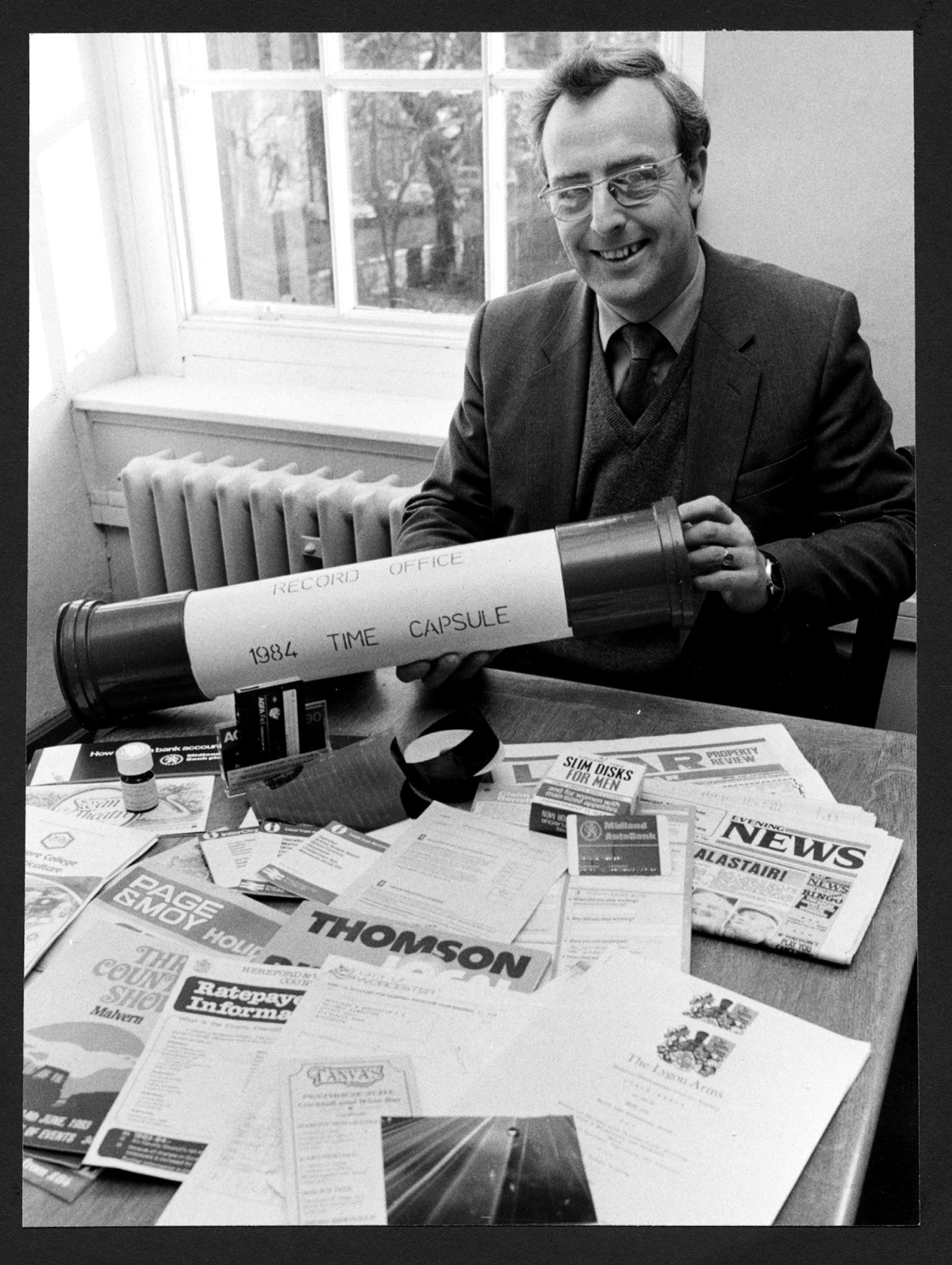
Tony with a time capsule which was buried in the new Record Office building when it was constructed in 1984. It is still there under the floor!
The opening of Charles Dickens’s “Tale of Two Cities” includes the memorable words: – “It was the best of times, it was the worst of times, it was the age of wisdom, it was the age of foolishness, it was the epoch of belief, it was the epoch of incredulity, it was the season of light, it was the season of darkness, it was the spring of hope, it was the winter of despair.”
I’ve always felt that to be an apt description of my arrival and particularly the first 6-7 years with the Record Office. It truly was a tale of two cities – or rather former counties. I arrived in October 1976 to follow Harry Sargeant as County Archivist of the then (dis)united County of Hereford and Worcester. Naïve and politically totally inexperienced, I was full of hope about building bridges and creating a joint service working simply for the good of the archives.
How foolish I was. I could see clearly the huge potential – sharing microfilming and conservation facilities, working together on outreach, taking the best of each other’s collection principles and cataloguing styles, let alone sharing administration and so on. What I failed to see, prior to arrival at least, was the extent of local emotions the merger had created.
Engendered by politicians, the media, and sadly even by some (but by no means all) of the staff, feelings ranged from fundamentally supportive, to simple antipathy, to absolute venom.
In my view at least, nobody who wasn’t deeply and personally involved in trying to run a harmonised service on a day-to-day basis, could possibly understand how quickly a spring of hope can turn to a winter of despair. I’ve learnt enough in life not to put words into other people’s mouths, but I’m pretty certain Harry Sargeant would concur wholeheartedly.
Over the years there were many other seasons of darkness, especially financial. Indeed, Robin Whittaker in his excellent paper “Worcestershire Record Office – from the Basement to The Hive: A Personal Perspective on its History” has described them really well. There is no need for me to repeat the catalogue, except to say that to this day, 40 odd years on, I can still vividly recall telling the first person I ever had to “let go” that they had to “move on,”– the reaction, the room they were in, their posture, who was with me, and even (I think) the colour of some of their clothes. Things like that stay with you for ever. And, sadly, it was not to be a one off.

Tony and Margaret Henderson (right) with Mrs Fay Nash of Kempsey, former County Councillor and member of Archives Panel. She was a huge supporter of the Record Office and very interested in Worcestershire history. She was an American, who during WWII had been a driver for General Patton.
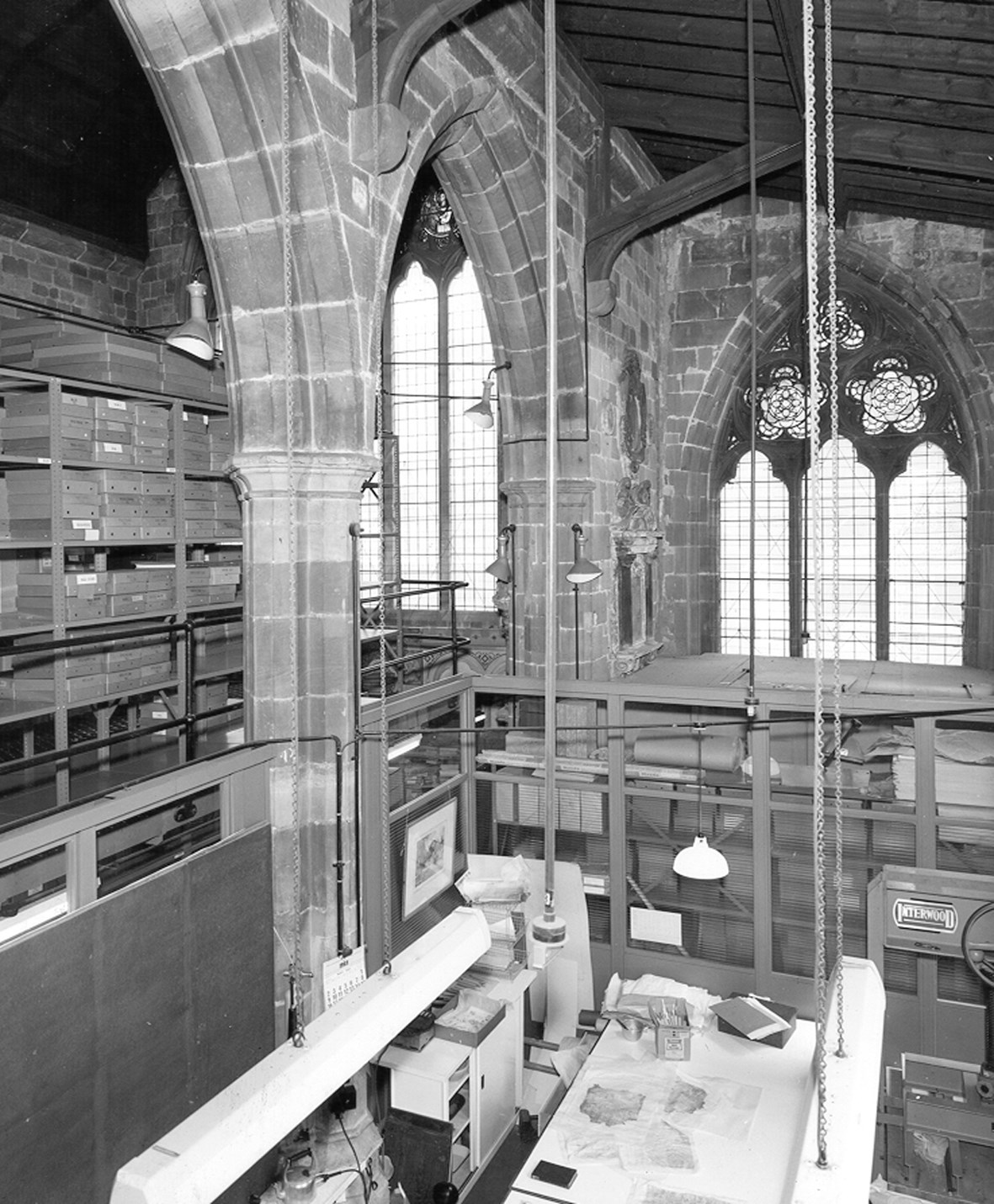
Inside St Helen’s when it was a Record Office
In great contrast however, there were also many seasons of light. One or two were slightly dazzling. Having failed, (as I saw it), to unify the Hereford and Worcester services overall, my then constant principal aim was to bring together the separate sections of the Worcester office: the Shire Hall basement offices and their Quarter Sessions and other administrative records, (plus later on the Modern Records Unit in the main County Hall building), with the much loved “traditional” Diocesan and other privately deposited records held at St Helen’s.
Both St Helen’s church and the Shire Hall basements were any archivist’s professional nightmare in terms of security, fire, flood and general Health and Safety.
As Robin Whittaker so ably describes, we looked at numerous existing properties as potential replacements – including what I think might have been my favourite – a huge block of the former Shrub Hill Hospital overlooking the Midland Road allotments. I had a bee in my bonnet about having a flag pole on the roof there with a huge Record Office banner proudly flying high over the city!!
In the end however, the inability to find an appropriate site worked to our distinct advantage by helping persuade the County Council to build what I believe to be the whole country’s first modern purpose-built archive – even though a senior council architect later described it as a “blot on the County Hall landscape”!! Having at one point been officially (and frighteningly) carpeted in their office by the then Chairperson of the County Council for publicly trying to embarrass the council into action I can’t say I was too bothered by the architectural criticism though!!
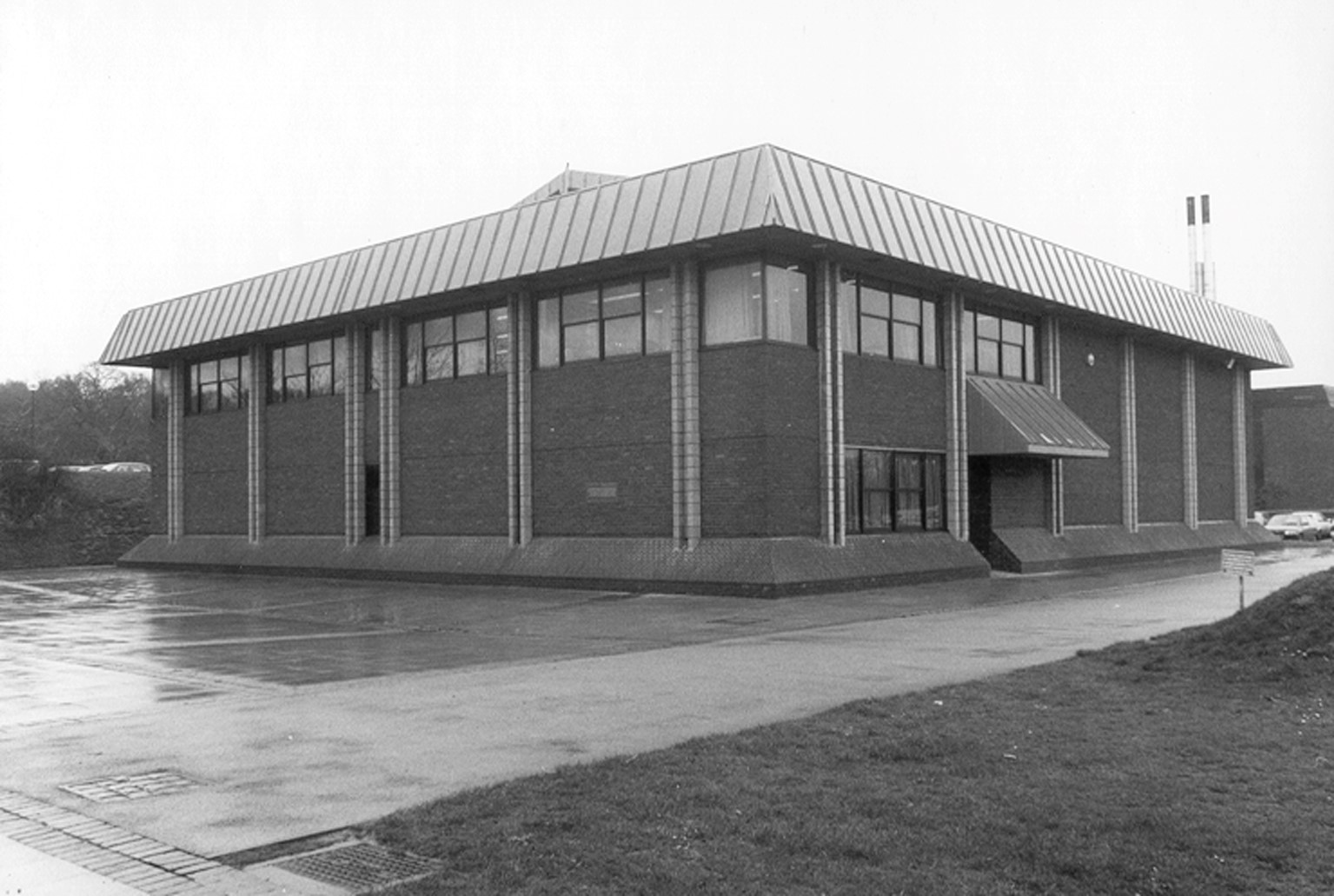
The new County Hall Branch
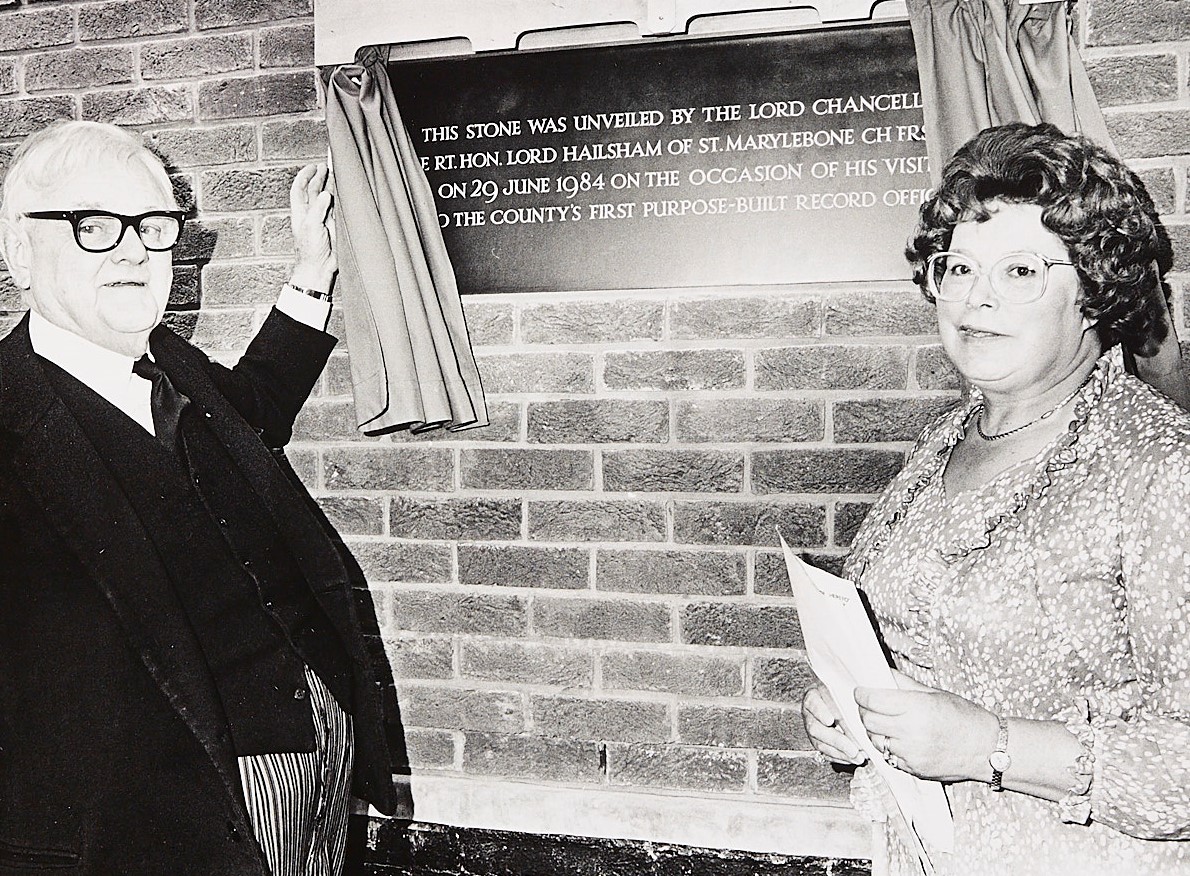
Lord Hailsham, the Lord Chancellor, unveils a stone marking his visit to officially open the new Record Office building, watched by Joan Hadley, Chair of Worcestershire County CouncilIf you search the council’s General Purposed Committee’s minutes, you’ll still find a formal decision saying that the County Hall building should be constructed in a manner capable of further development to hold the St Helen’s archives when the Record Office’s licence to use the church ran out. I still have a great sense of failure that it never happened.
Nevertheless, there were other dramatic and usually very enjoyable changes. Rightly or wrongly – and not everyone agreed -maintaining the service in the public eye seemed to me the best way to ensure its survival. The huge power of local press and radio was harnessed to bring its facilities and contents to a very wide audience, as were very numerous talks, displays, evening classes and open days (some of them from a Health and Safety viewpoint almost too successful for their own good!).
On a personal level I particularly enjoyed working closely with BBC Hereford and Worcester as a regular long term contributor (mainly) with presenter Mike George, although finding and preparing new material every week was a hard slog. Also, the Record Office as a whole can rightly be proud of the various huge and amazing Local History Fairs we ran. They took over much of the interior of County Hall as well as the Record Office building itself, plus very large marquees in the grounds!
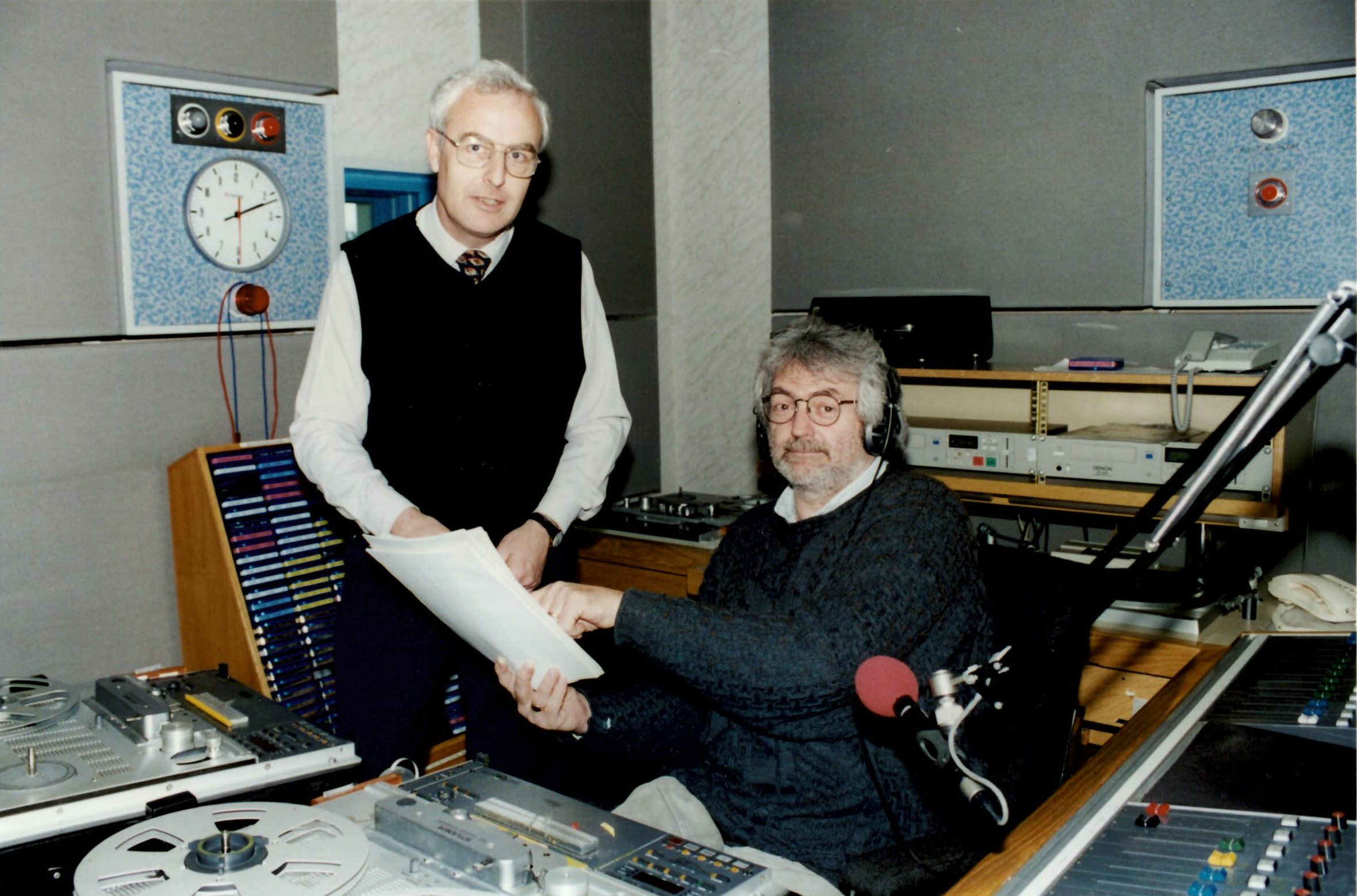
Tony Wherry with Mike George at BBC Hereford and Worcester, 1995
Public demand grew exponentially, partly generated by our own efforts and partly by the phenomenal growth of interest in family history substantially initiated by the TV series “Roots”. Based on Alex Haley’s 1976 book it told the story of Kunta Kinte an 18th century African sold into slavery in Africa, transported to North America, and his descendants. It would be more than interesting to see if it would have a reinforcing effect on archive services if the series were to be re-run today.
Our ability to capitalise on the family history boom was enhanced enormously by the nationally ground- breaking work (originally begun by Harry Sargeant) with the Mormon Church, microfilming original parish registers. I was only too glad to continue and develop it. Originally conceived just as a significant preservation operation, the fact that we had two copies of the films enabled one set to be used by the public. Demand by family historians soon rose almost exponentially. With it grew a far-reaching public awareness of the Record Office.
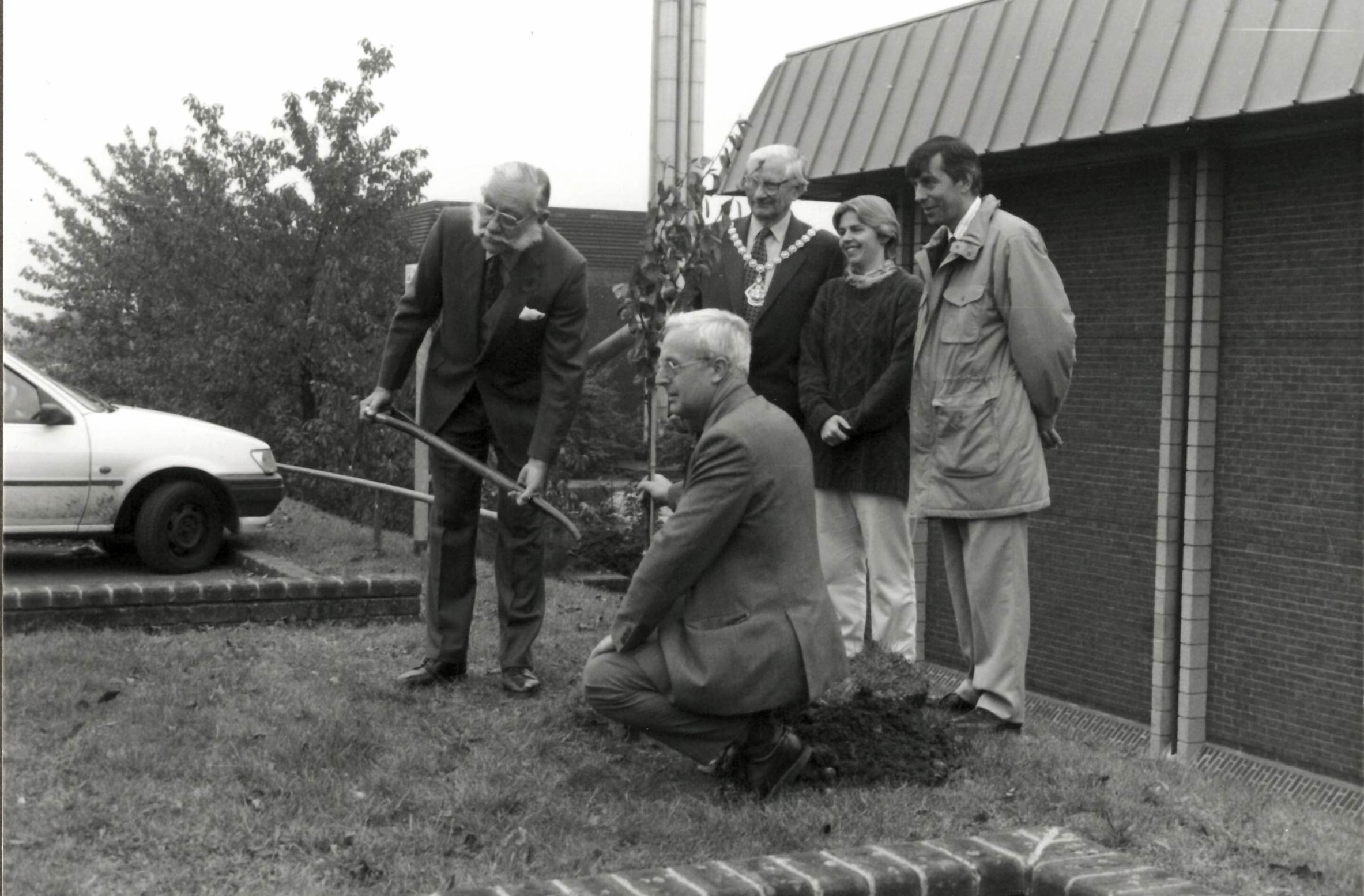
Chair of the Friends of Worcestershire Record Office, Peter Piggott, plants a Worcester Black Pear Tree outside County Hall Branch for the Record Office’s Golden Jubilee. in 1997. Tony Wherry, Tony O’Reilly (Chair of County Council), Helen Froud and Tim Porter look on. The pear tree has grown and has been producing pears for many years.
Equally ground breaking was the establishment of the Friends in 1979, following a large public meeting at Worcester’s Guildhall. To say the Record Service in Worcestershire owes a huge debt to the Friends, and particularly its hard-working officers, would be the under statement of the year. These notes are a real personal opportunity for me to say how grateful and appreciative I have been, and remain.
I would like to make exactly the same comments about all the staff who came, stayed, or went over the years, not forgetting the “external” support and guidance of Departmental bosses, Solicitors, Human Resources officers, Trade Union officials and Treasurer’s accountants. One or two of the latter were very quietly, (but legally!!), very creative in dark times!
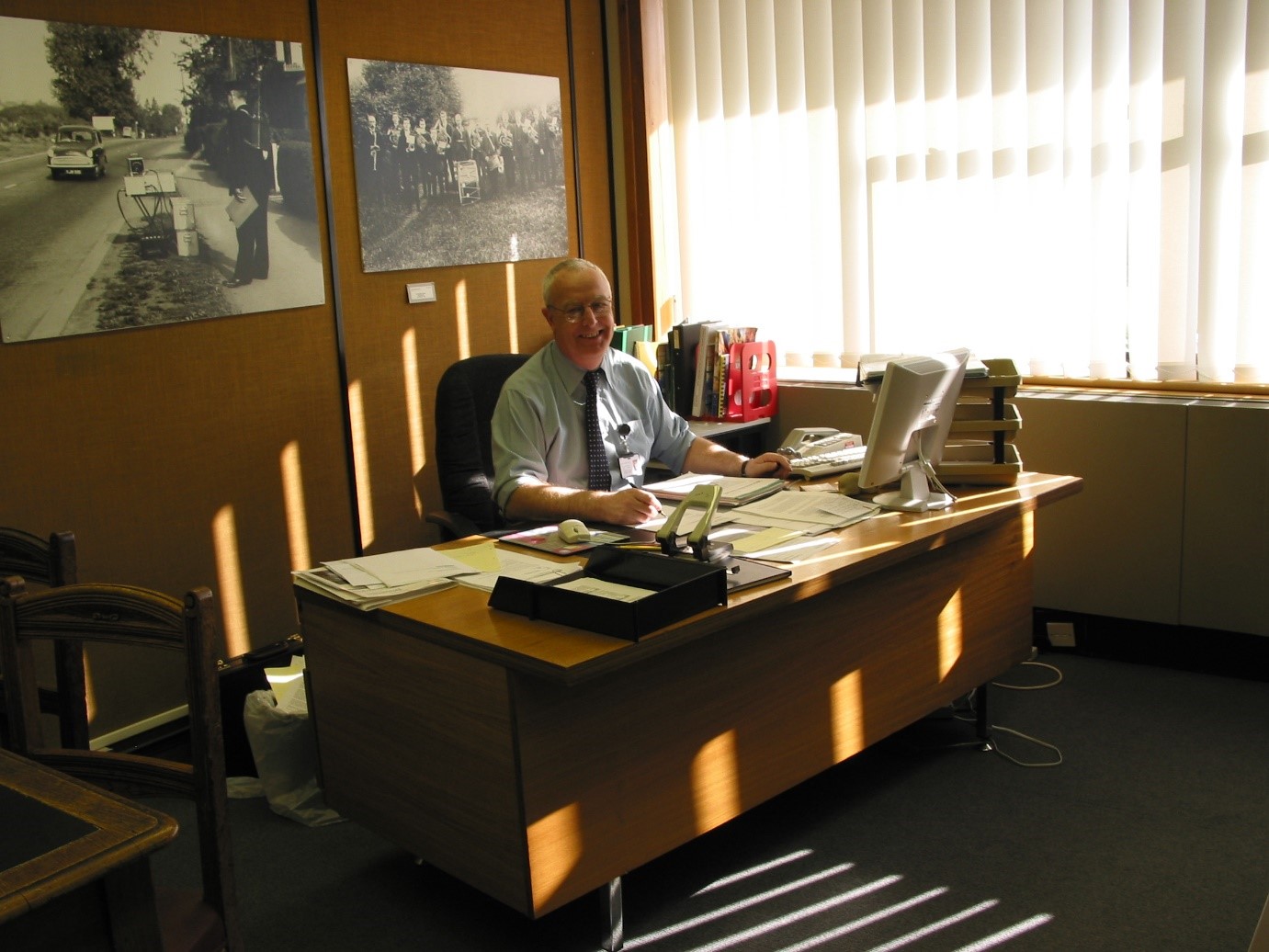
Tony Wherry at his desk
There were too many different characters and personalities to single anyone out – indeed it would be invidious to do so – but each one contributed something of themselves and their commitment, even if we had different points of view. For that it’s impossible to be anything other than grateful beyond belief.
You can read the blog about the origins of the Record Office still, and we will move on to Debbie Birch’s time in charge soon.
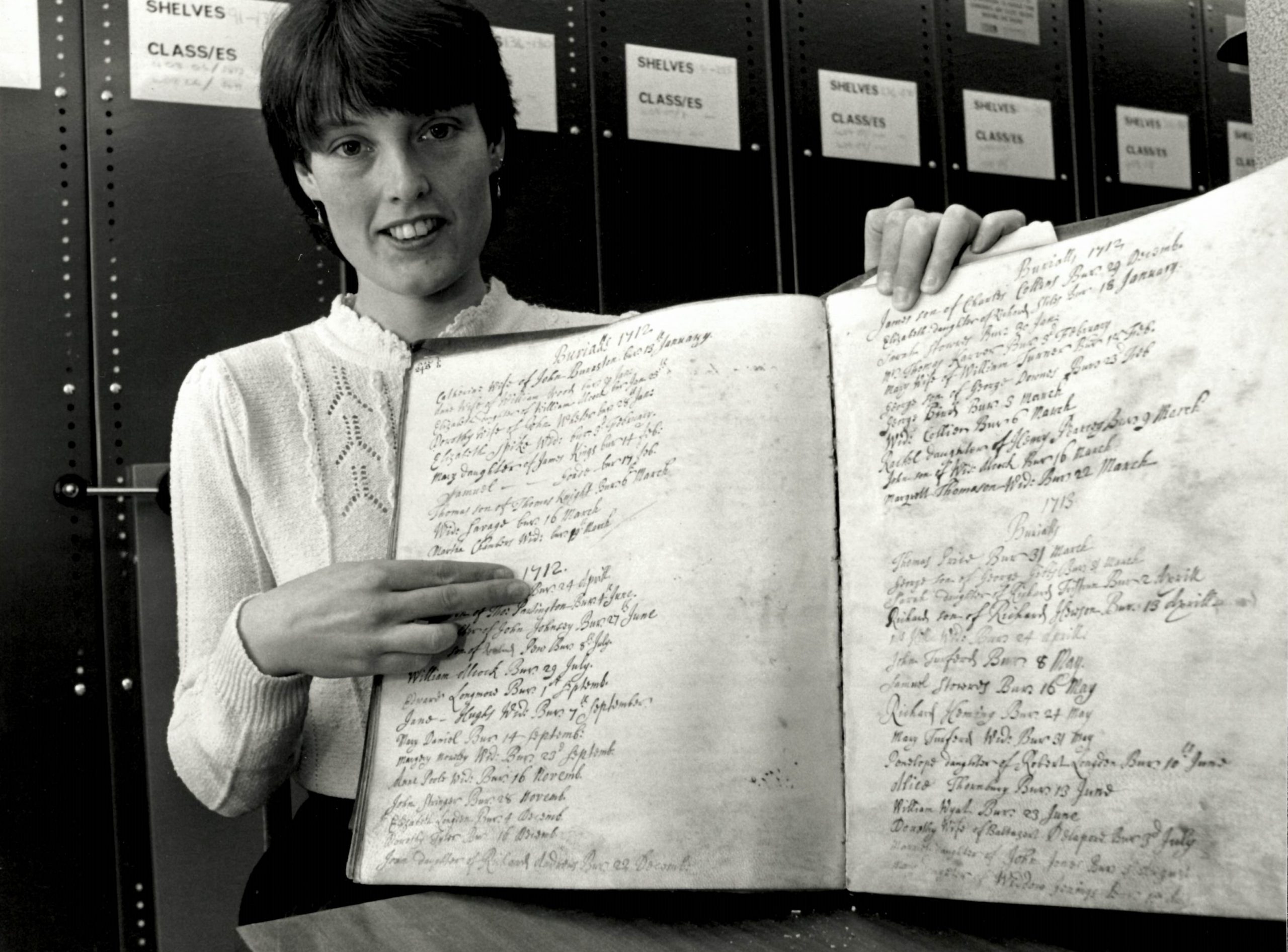
Archivist Helen Fielding with St Andrew’s Worcester Parish Register. © Worcester News. 1985
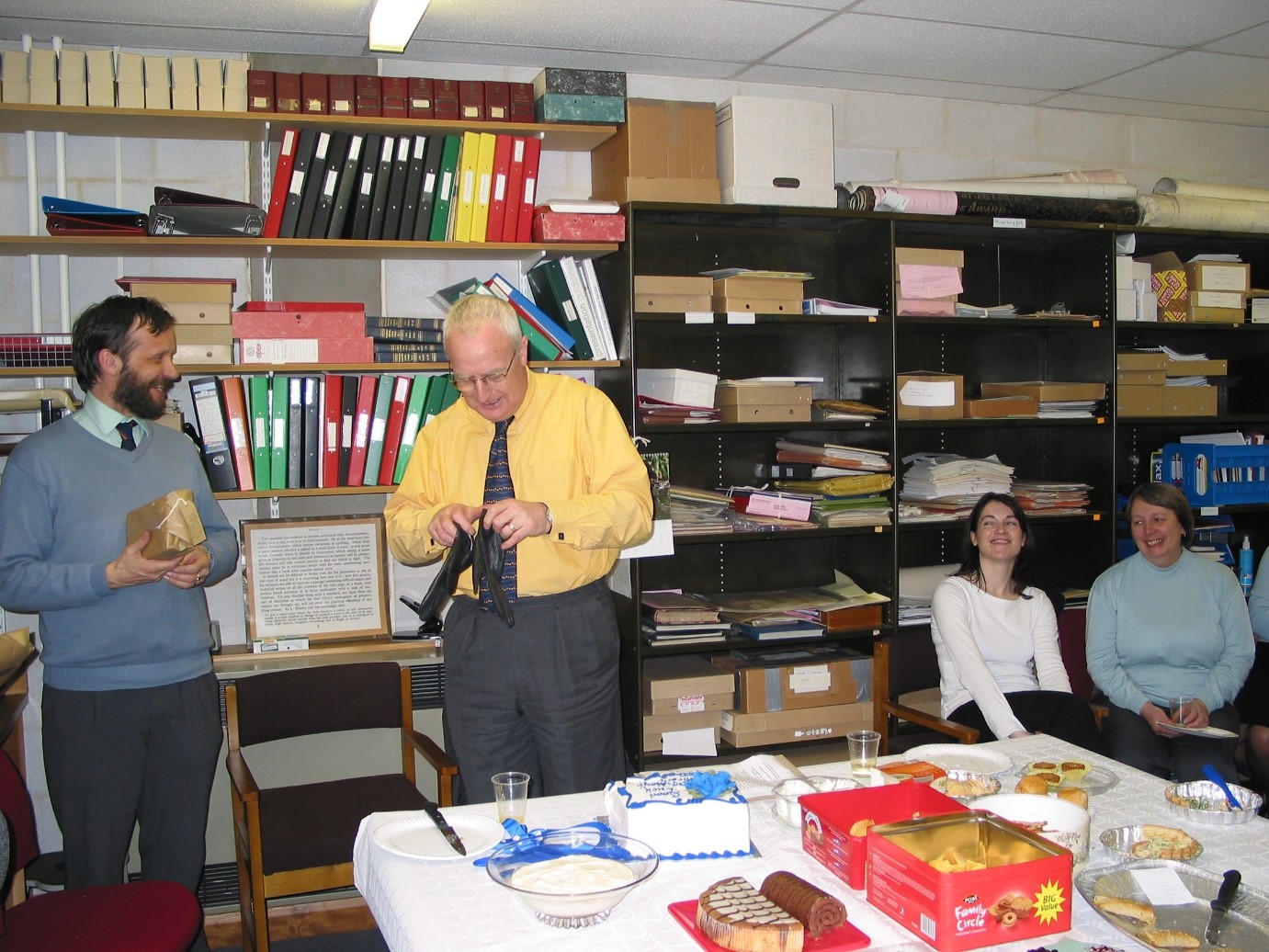
Tony’s leaving day
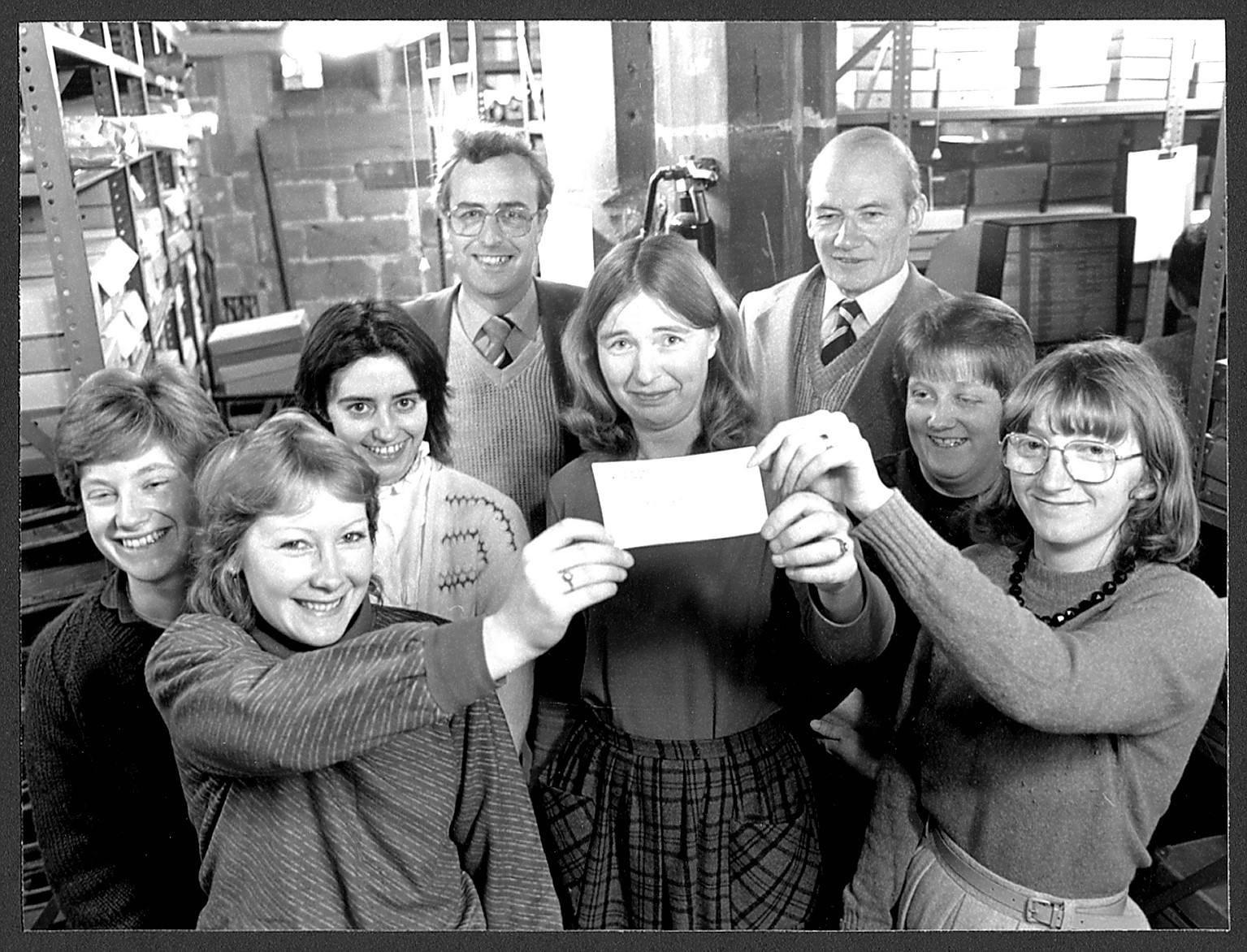
Staff with a cheque, after a bequest was left to record Office staff by a Malvern man who’d used the office for his family history research. Michelle Fitzherbert, Fran Ricketts, Claire Goodall, Tony Wherry, Brenda Harwood, John Kundert, Marion Jones, Maggie Tohill
Opening County Hall Branch

Tony Wherry, Clare Goodall and Michelle Fitzherbert supervise the removal of archives from Shirehall basement to go to County Hall. December 1984.. Because of the way the rooms were configured and there being no lifts etc, the firm used ‘stretchers’ to manoeuvre the archives out of the rooms down corridors and stairs to get out to their van. Archivists ere then at the County Hall waiting to receive the material.
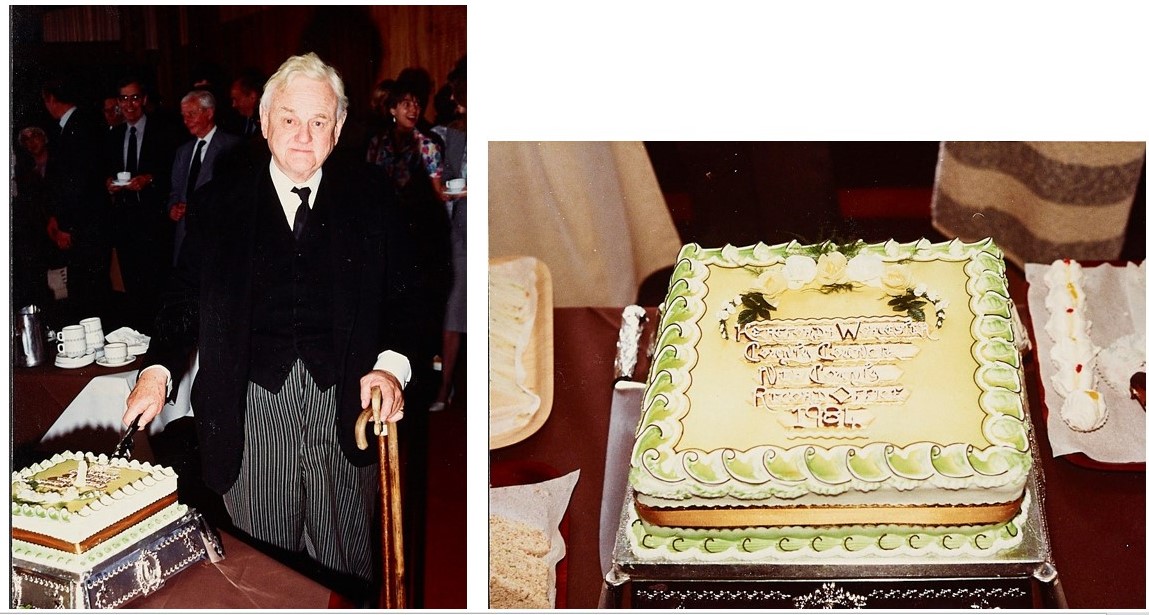
Lord Hailsham cutting the cake to mark the new Record Office building at County Hall
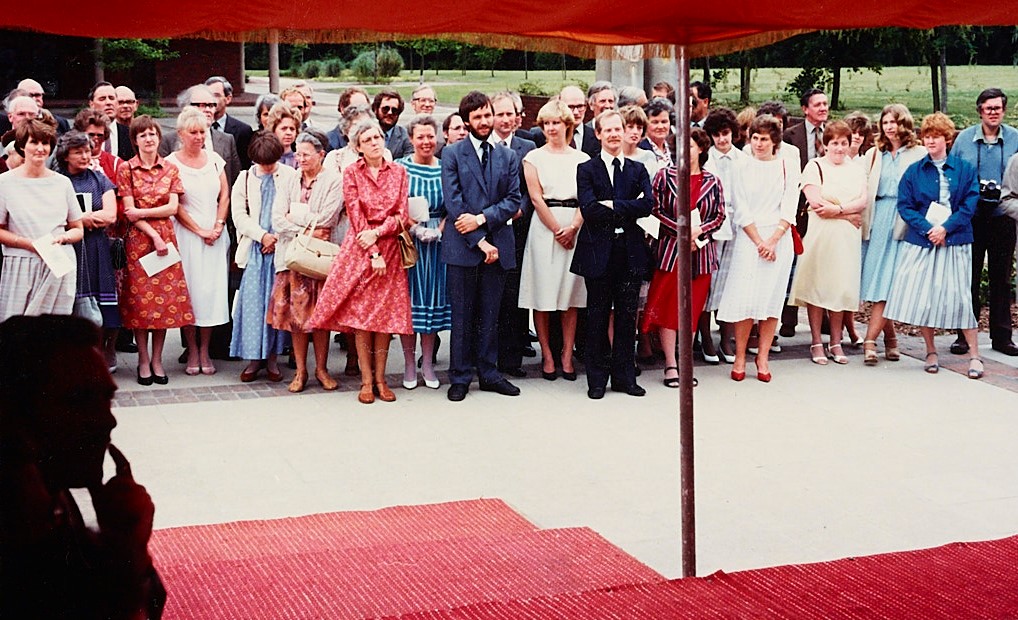
Record Office staff at the opening of the County Hall branch
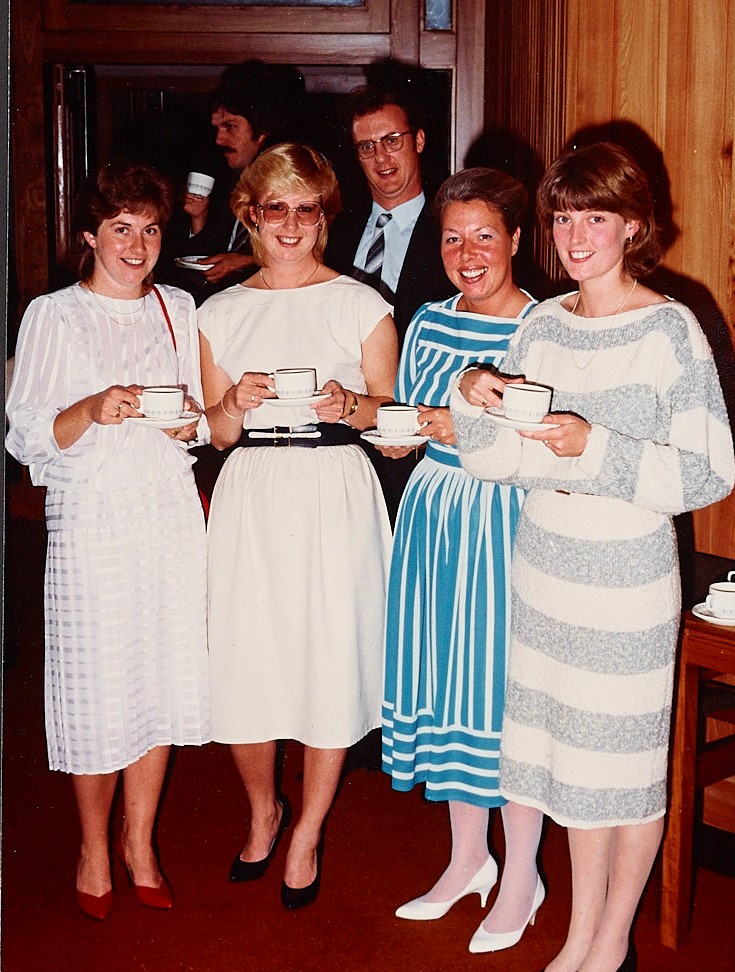
Members of Record Office staff at the official opening – Christine McGovern, Kathy Edwards, Sister Marilyn Dack (Occupational Health) and Helen Fielding
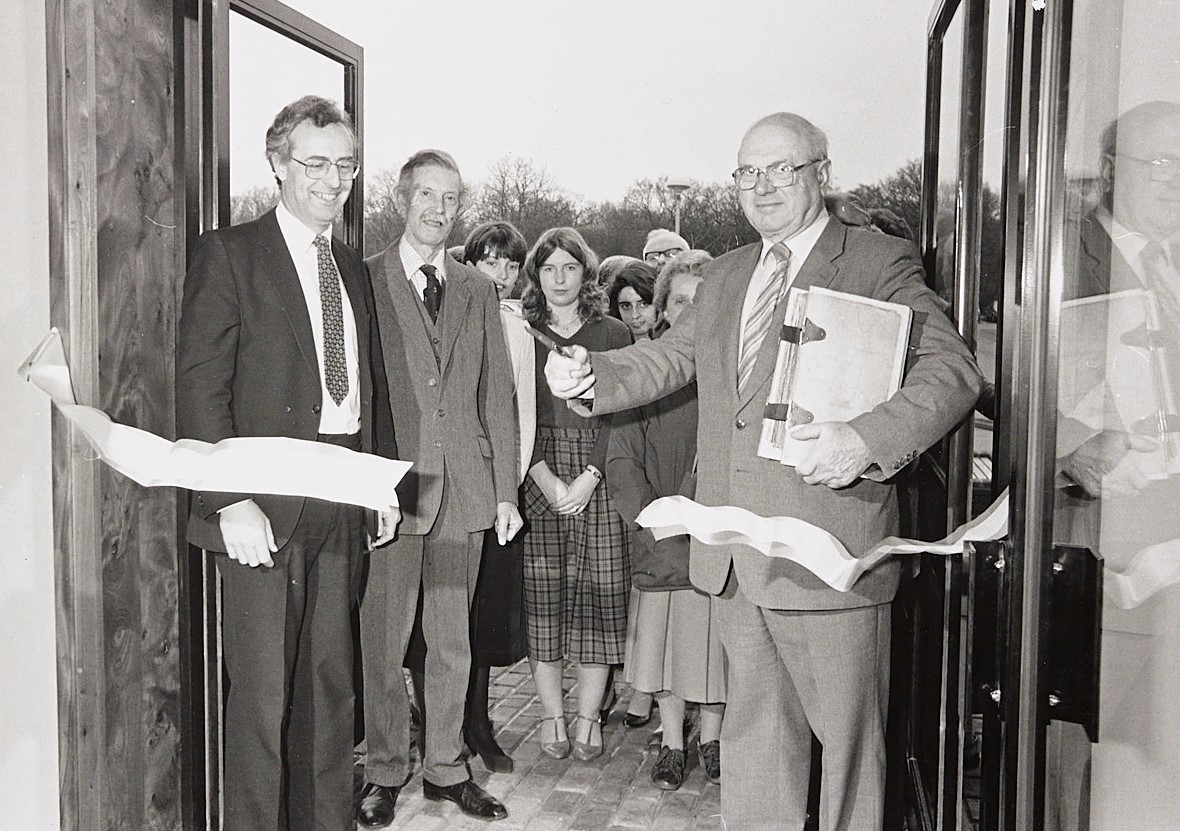
Frank Cooney, Chair of the General Purposes Committee, cuts the ribbon to open the Record Office to the public, watched by Tony Wherry, 4th February 1985.
Worcestershire History Centre
Worcestershire History Centre opened in the former Co-op building on Trinity Street after the Record Office had to move out of St Helen’s. The site was earmarked for the planned joint Library and History Centre, although when the University came aboard it was too small so a bigger site was needed, which became The Hive. It brought together the Local Studies Library from Worcester Library and their photo collection, as well as microfilm copies of Record Office resources such as newspapers, parish registers, wills, census and birth/marriage/death indexes. There were also 12 public computers.
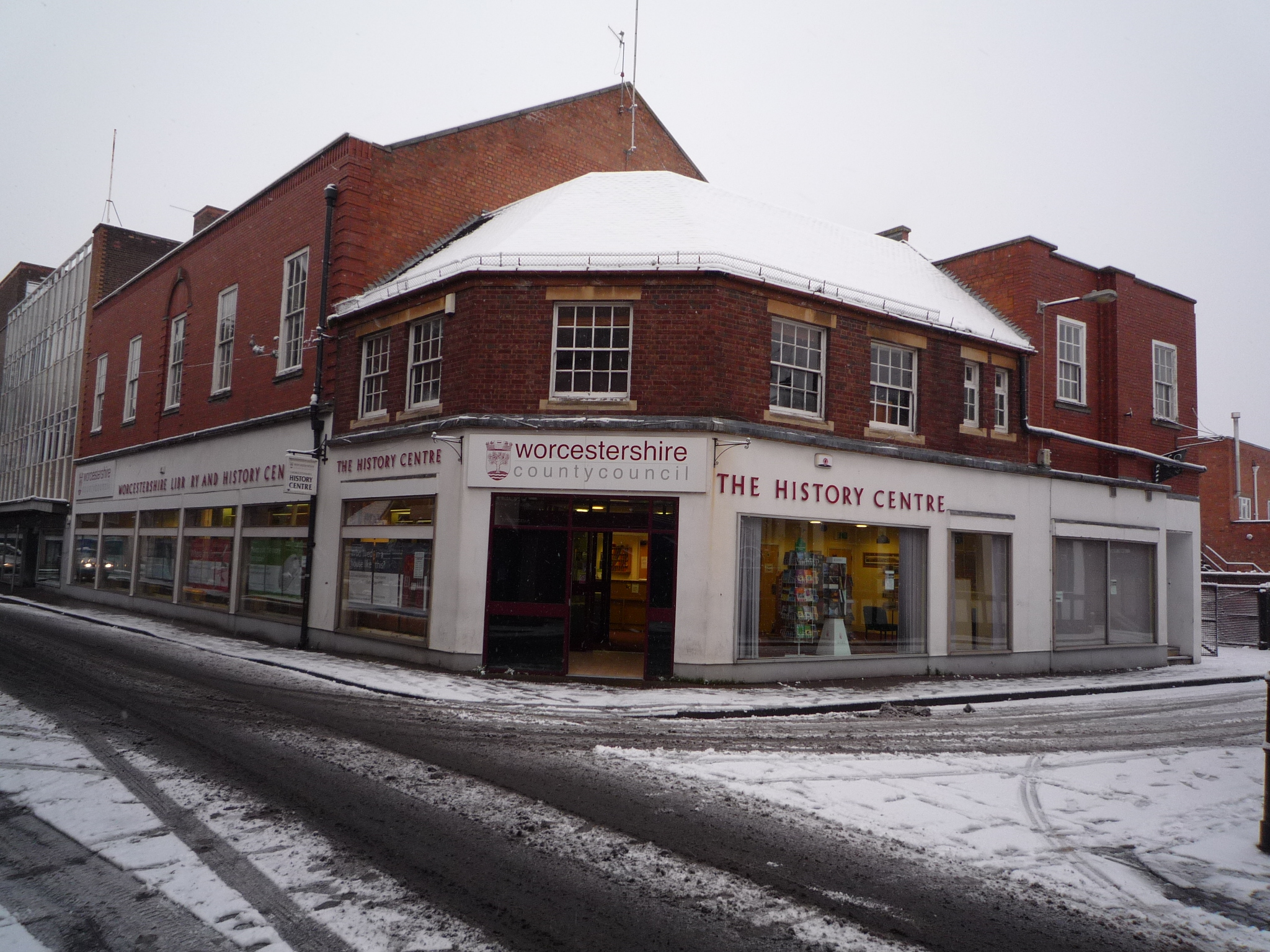
Worcestershire History Centre, Trinity Street, Worcester.
Post a Comment